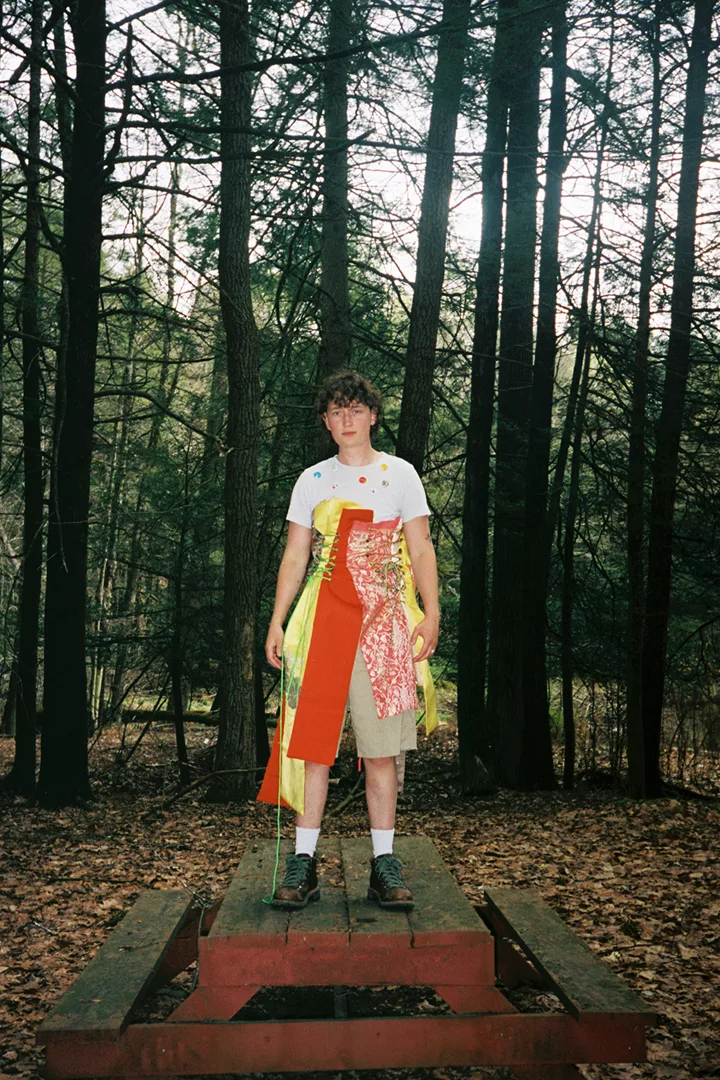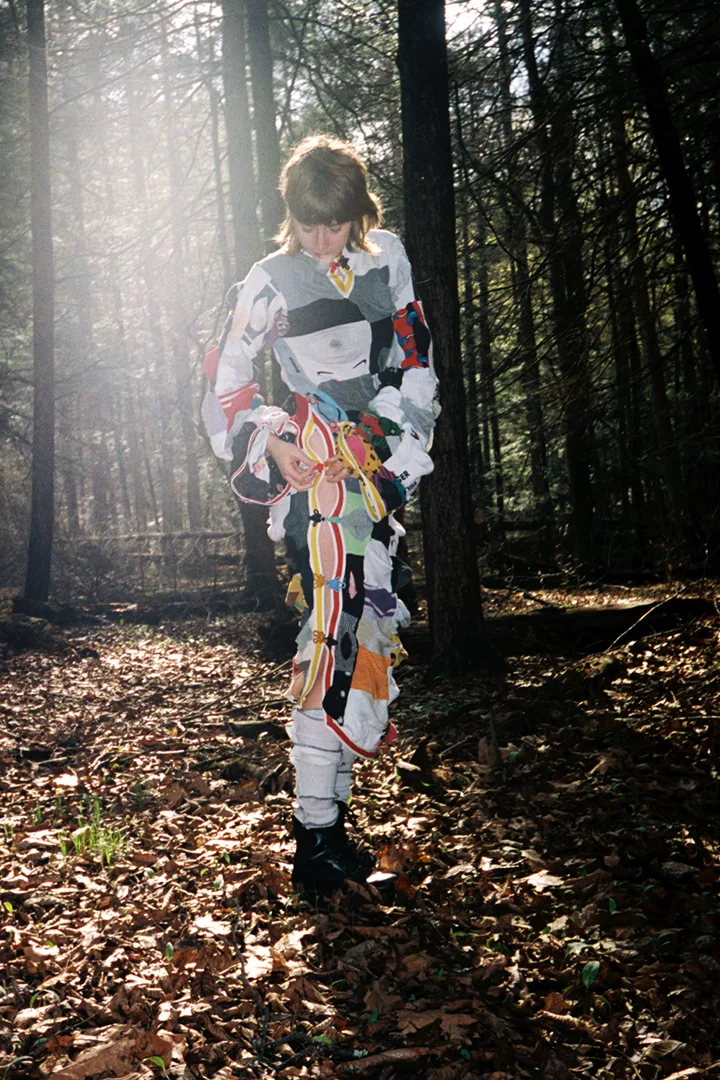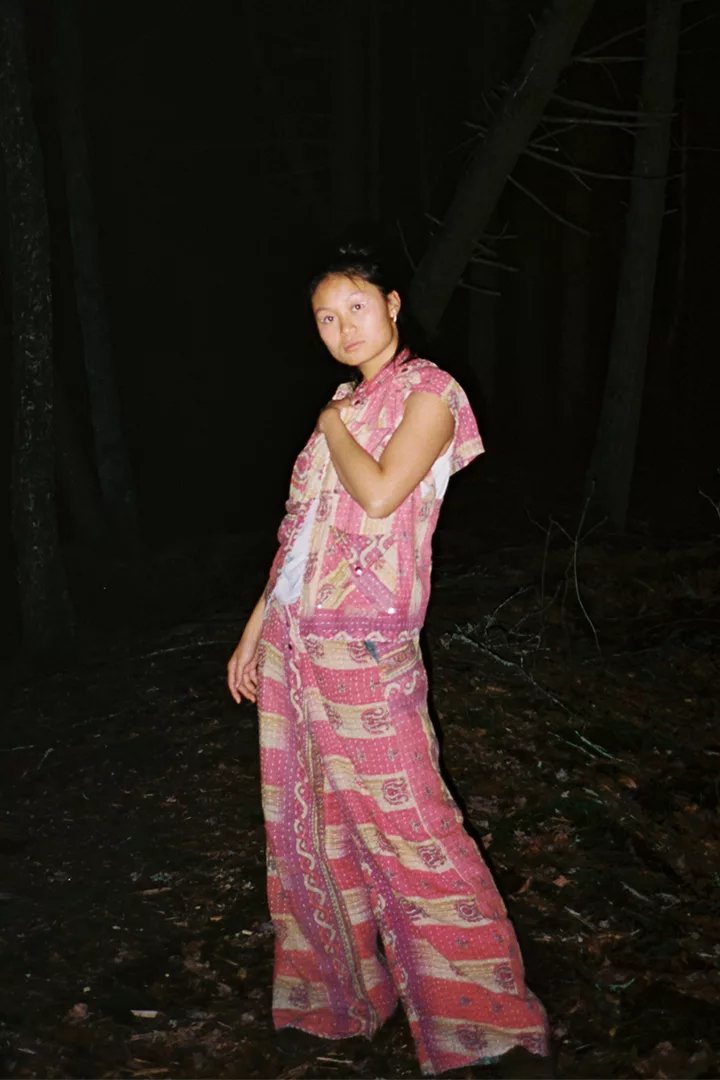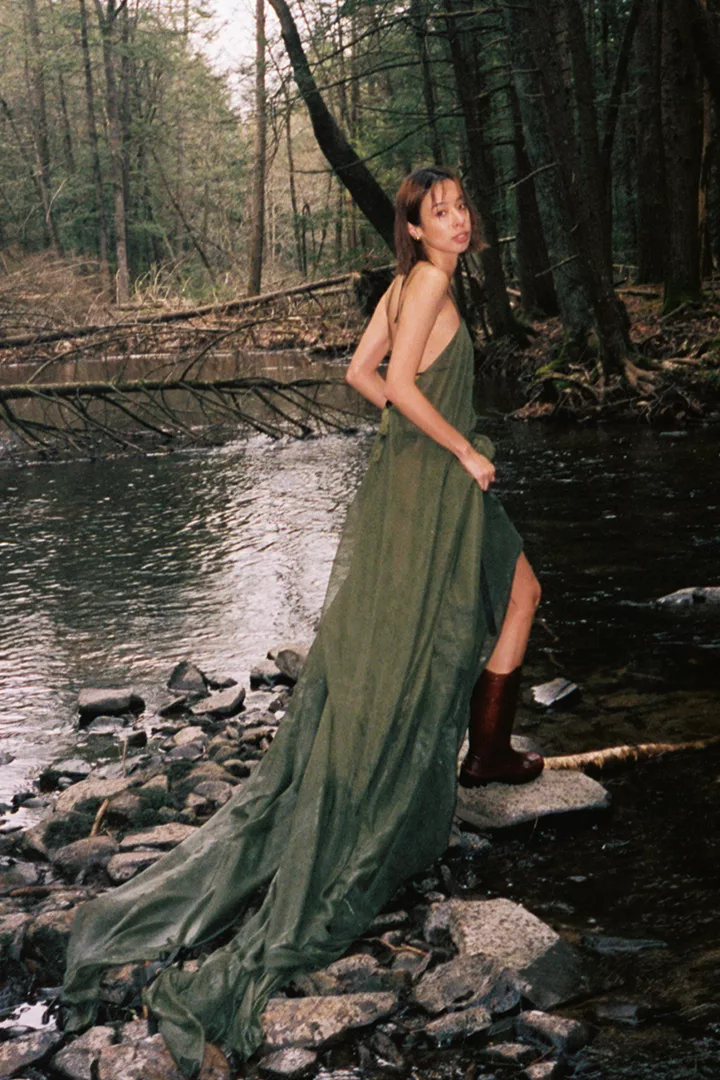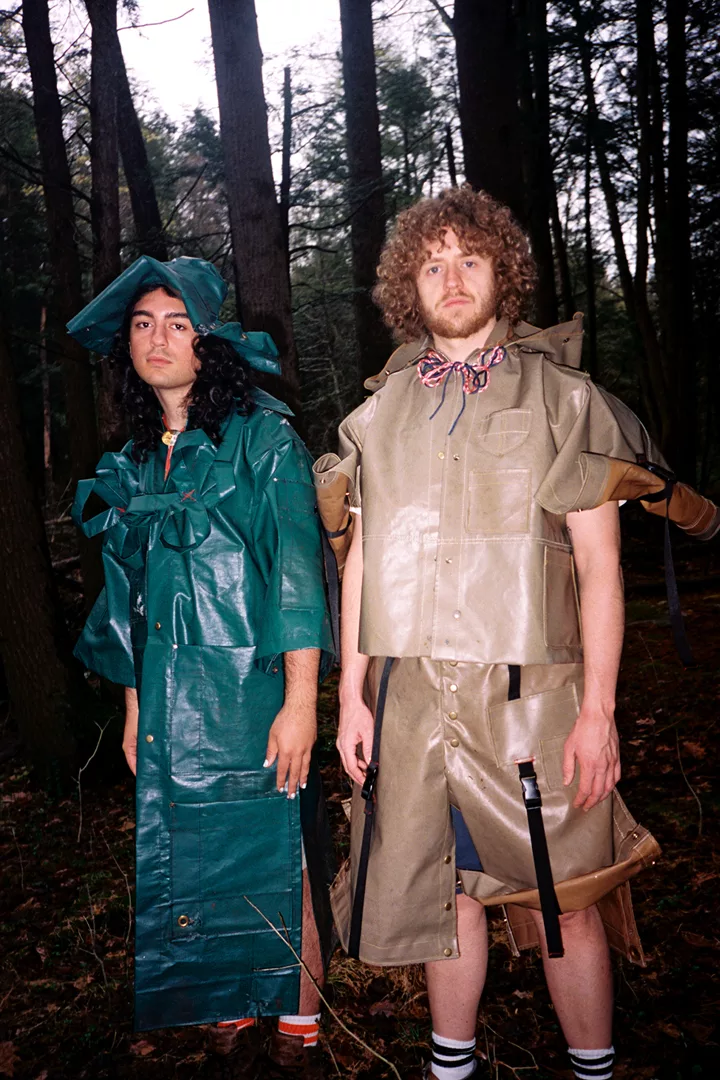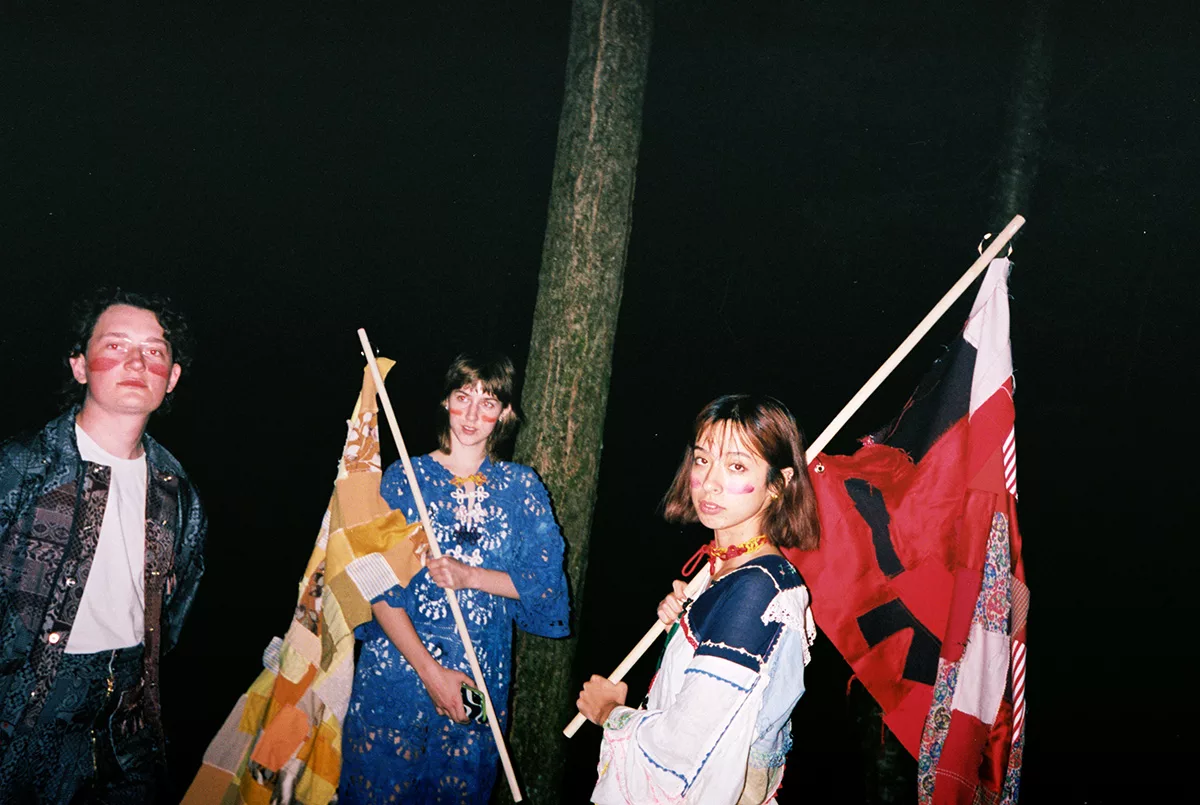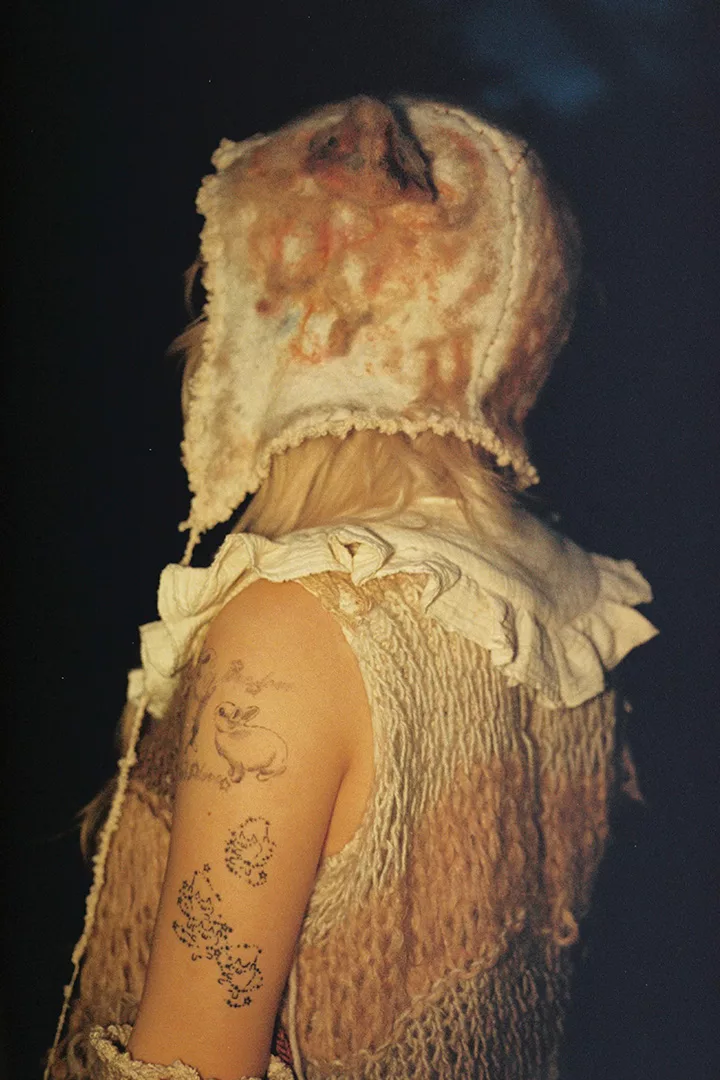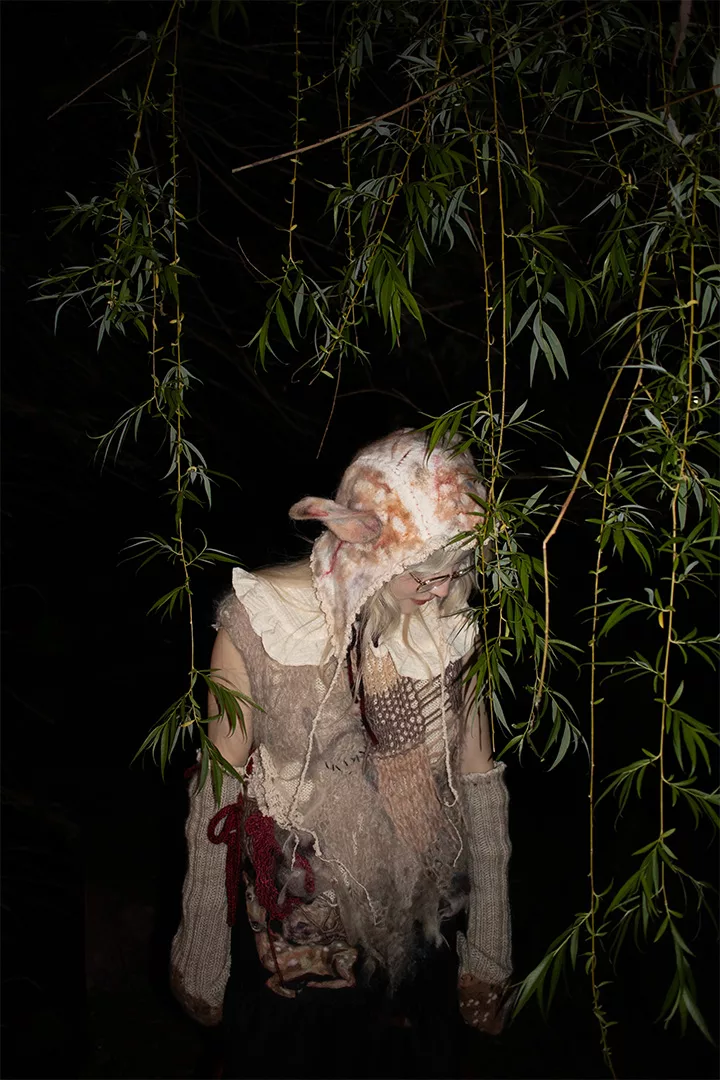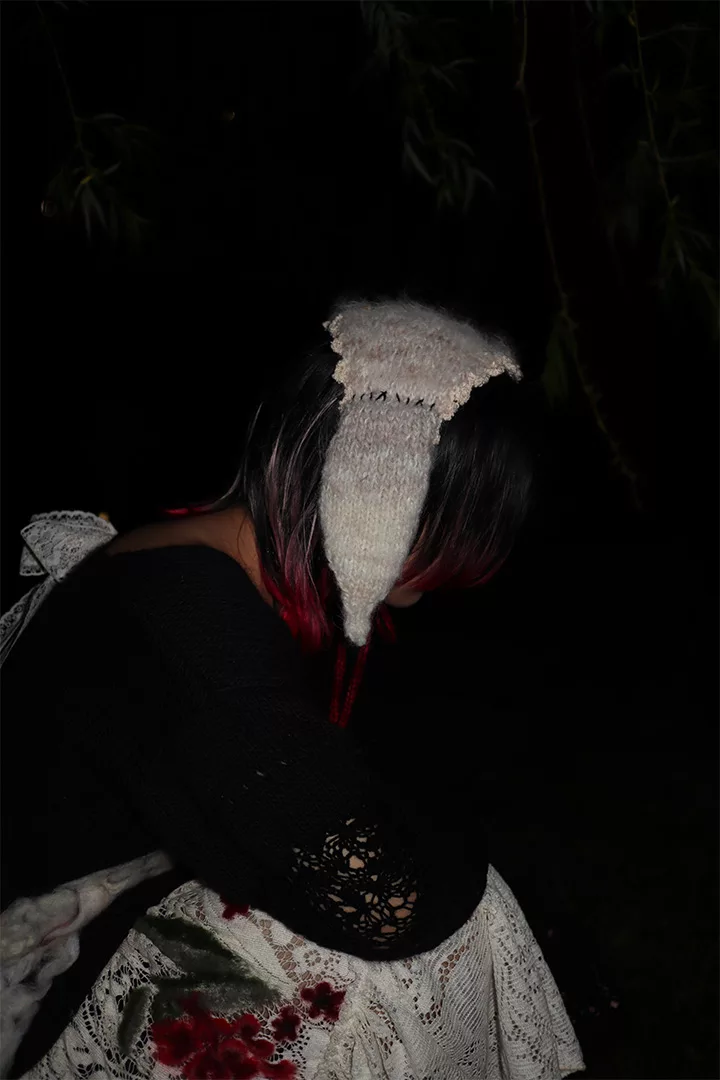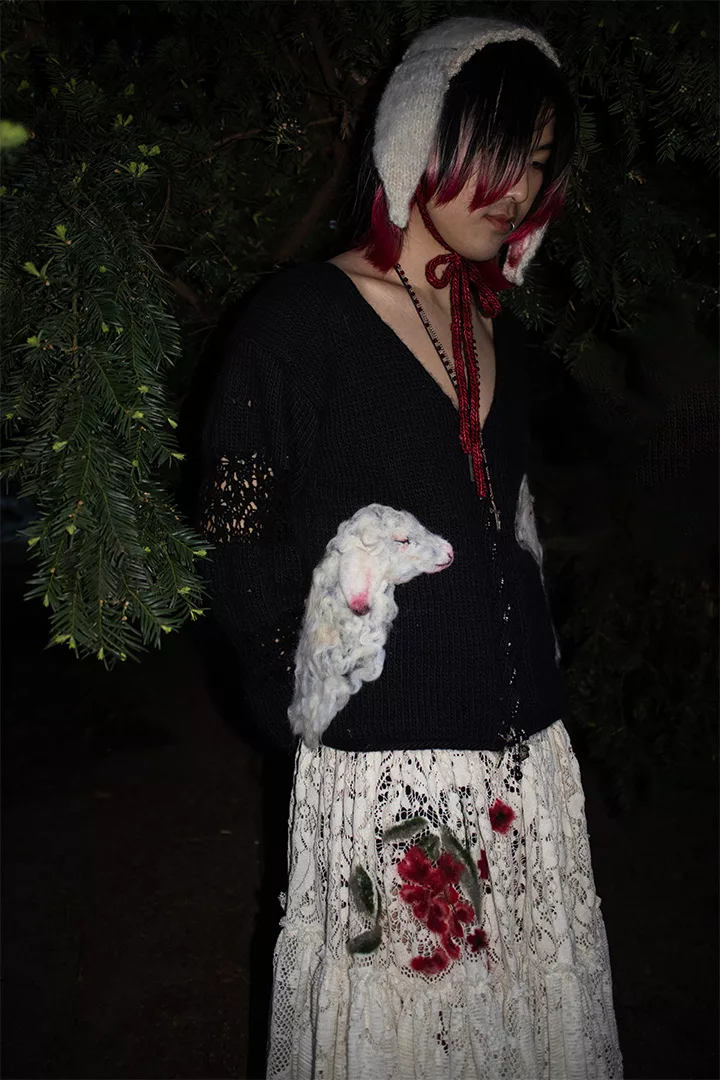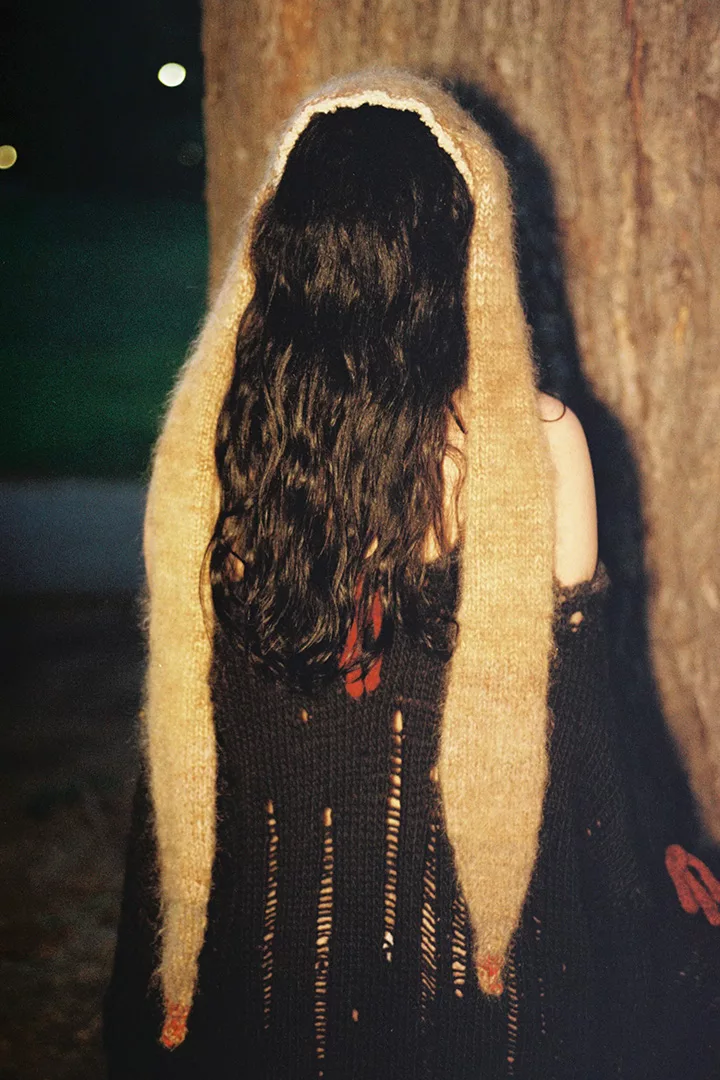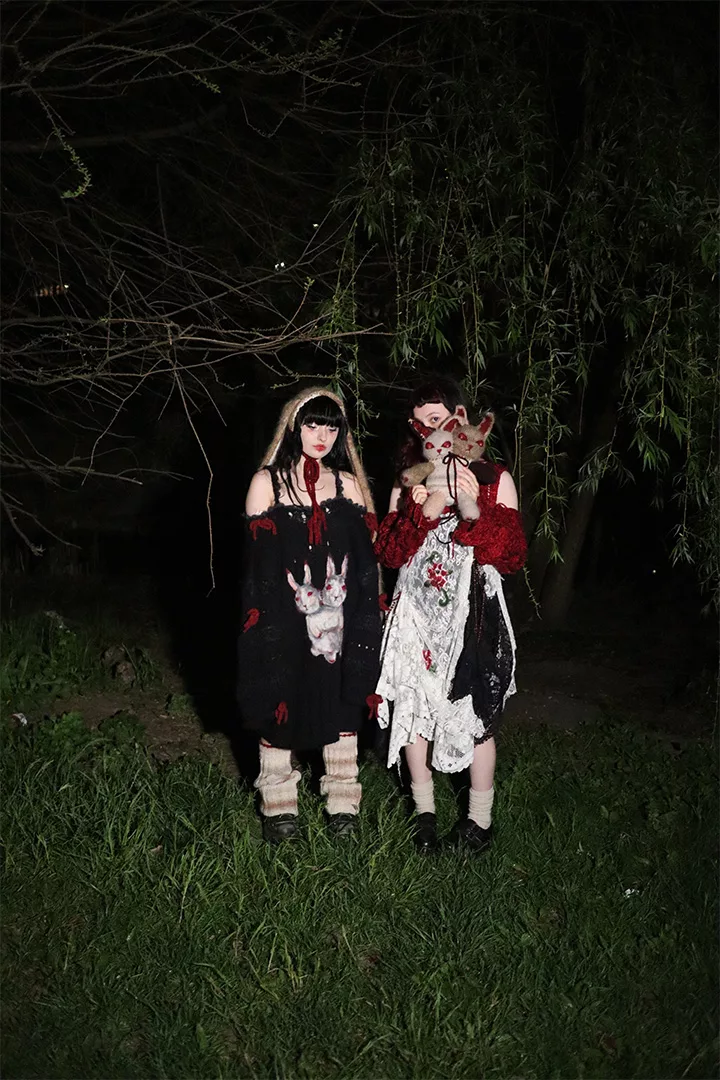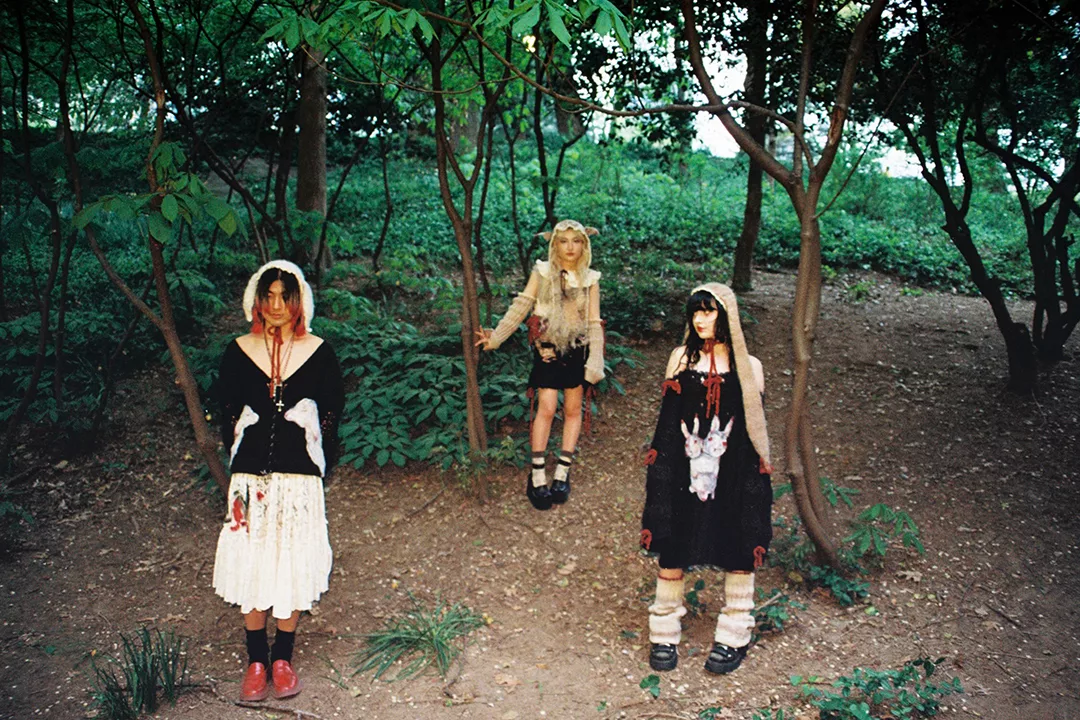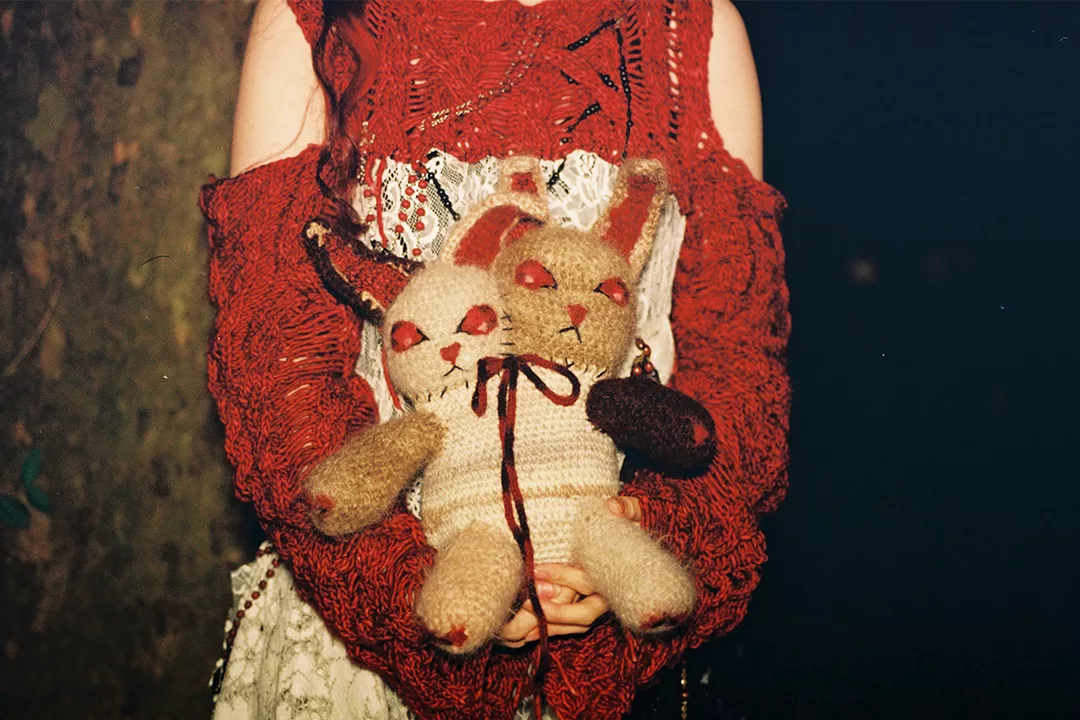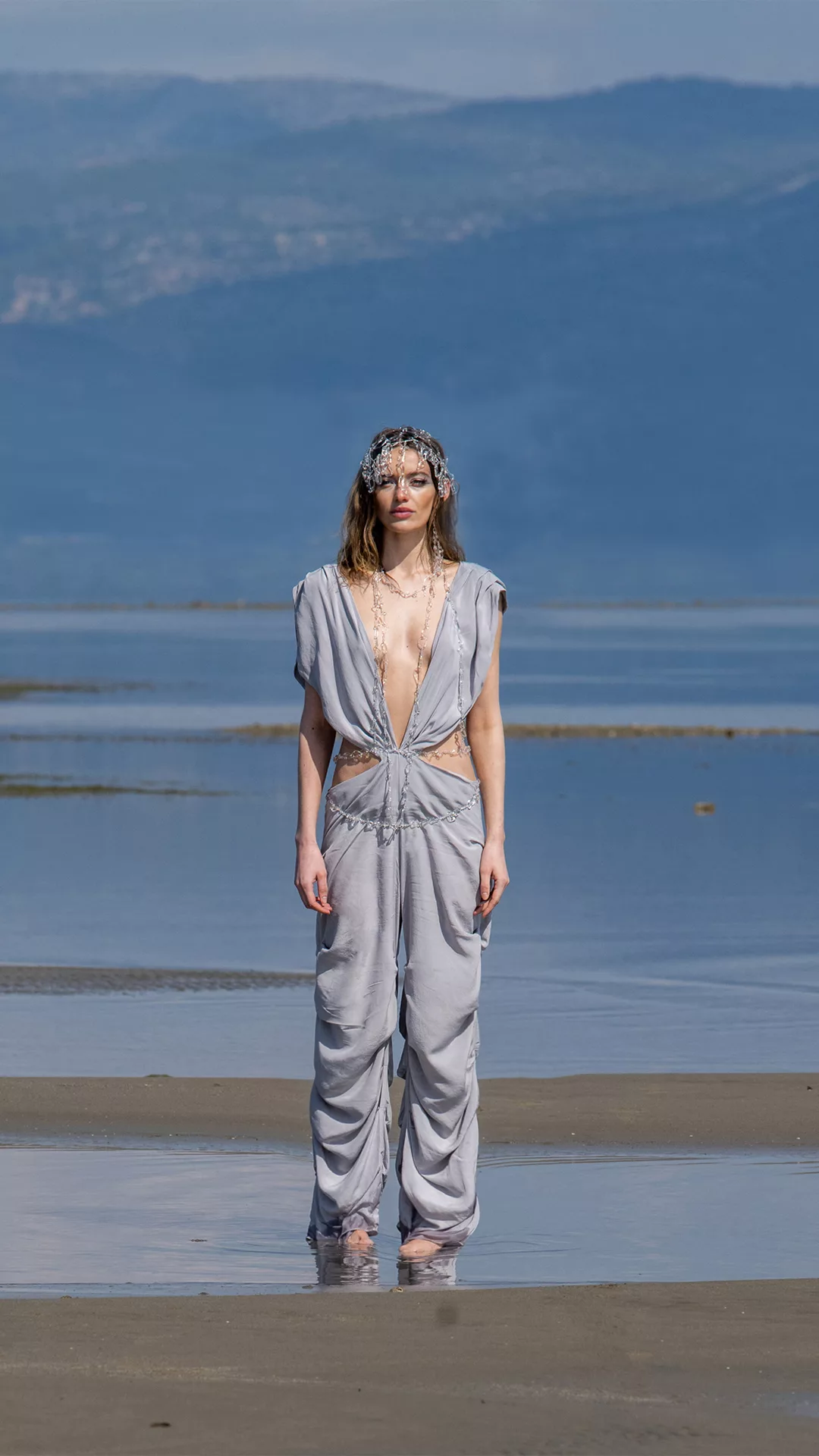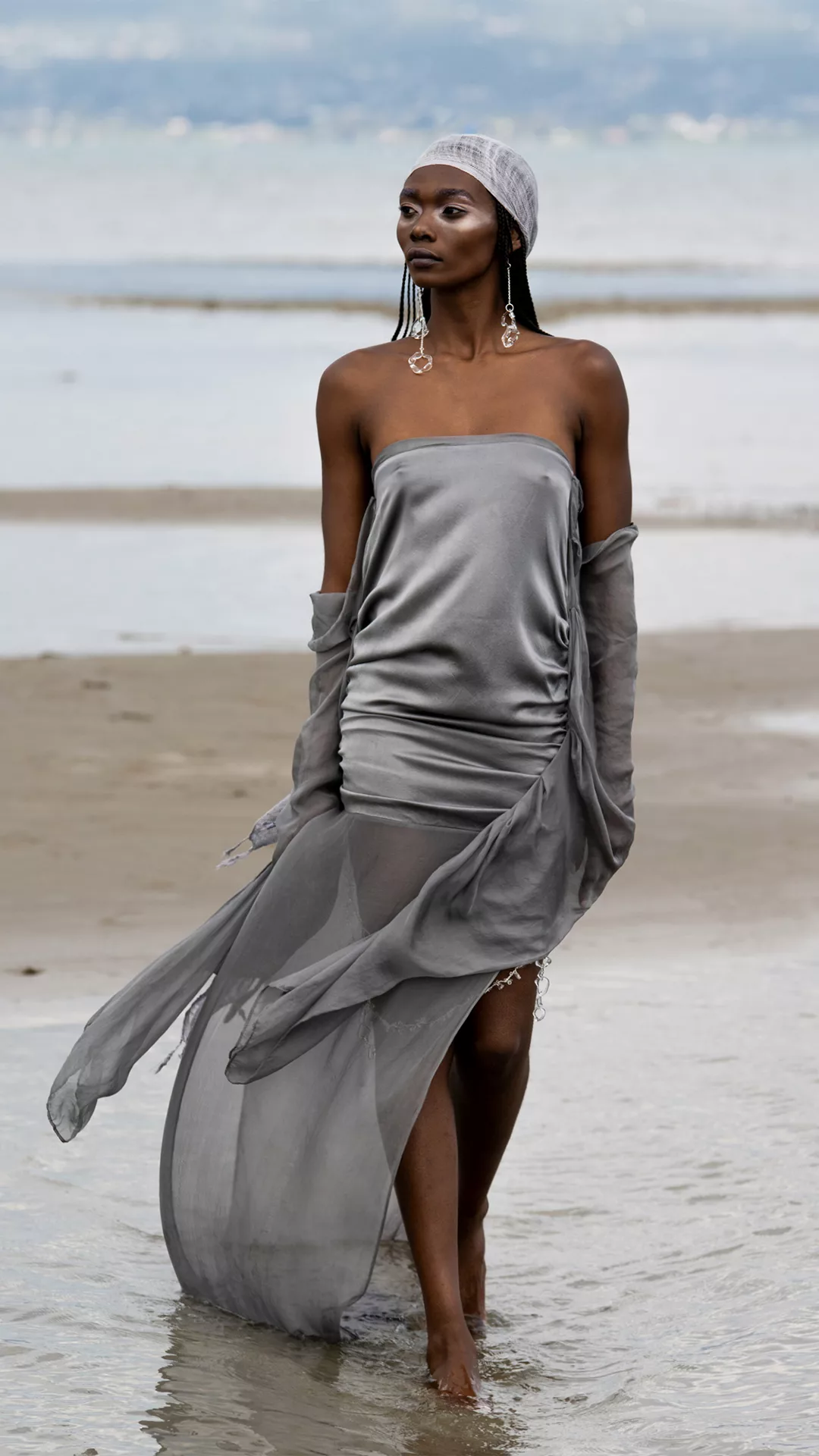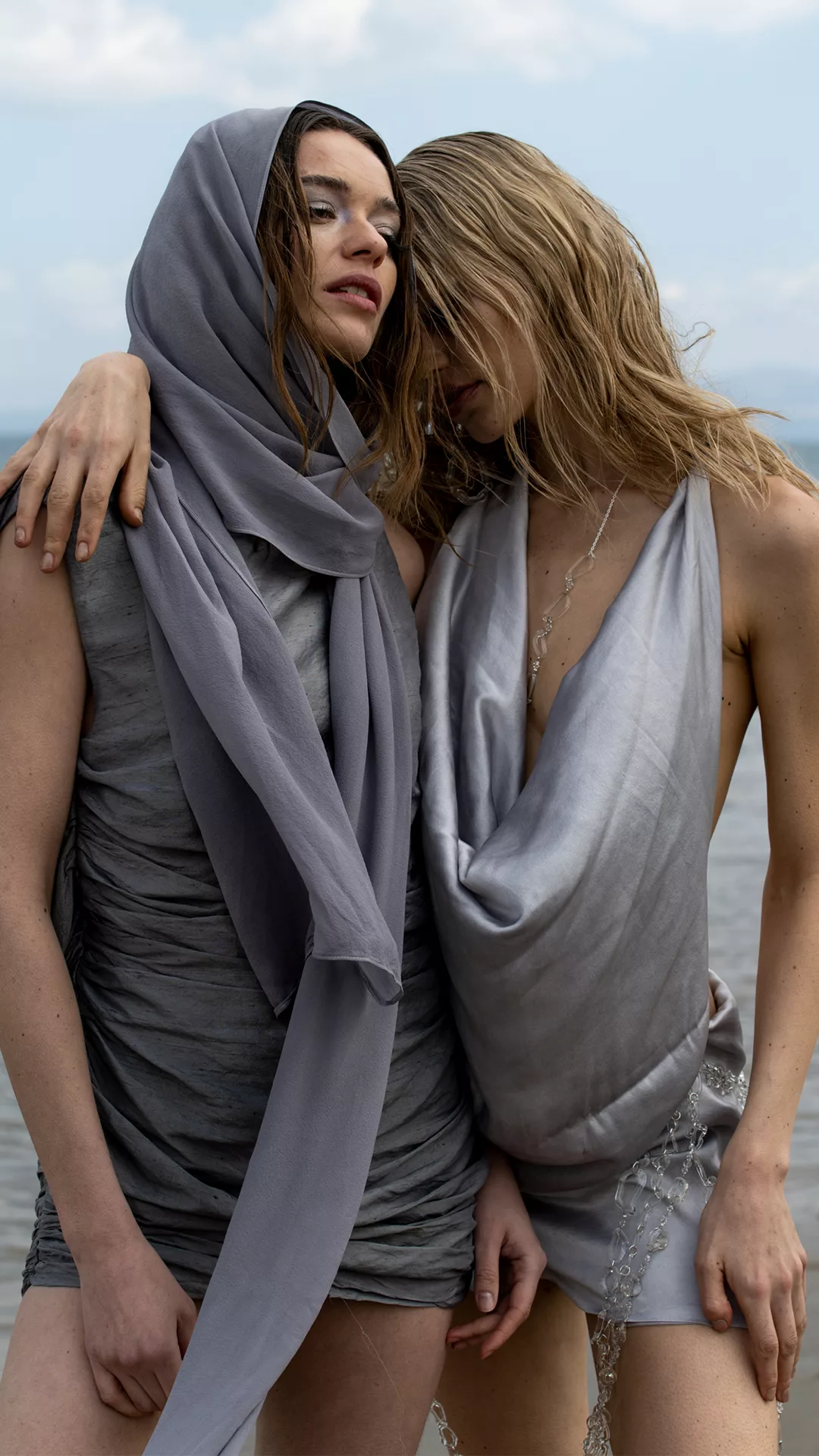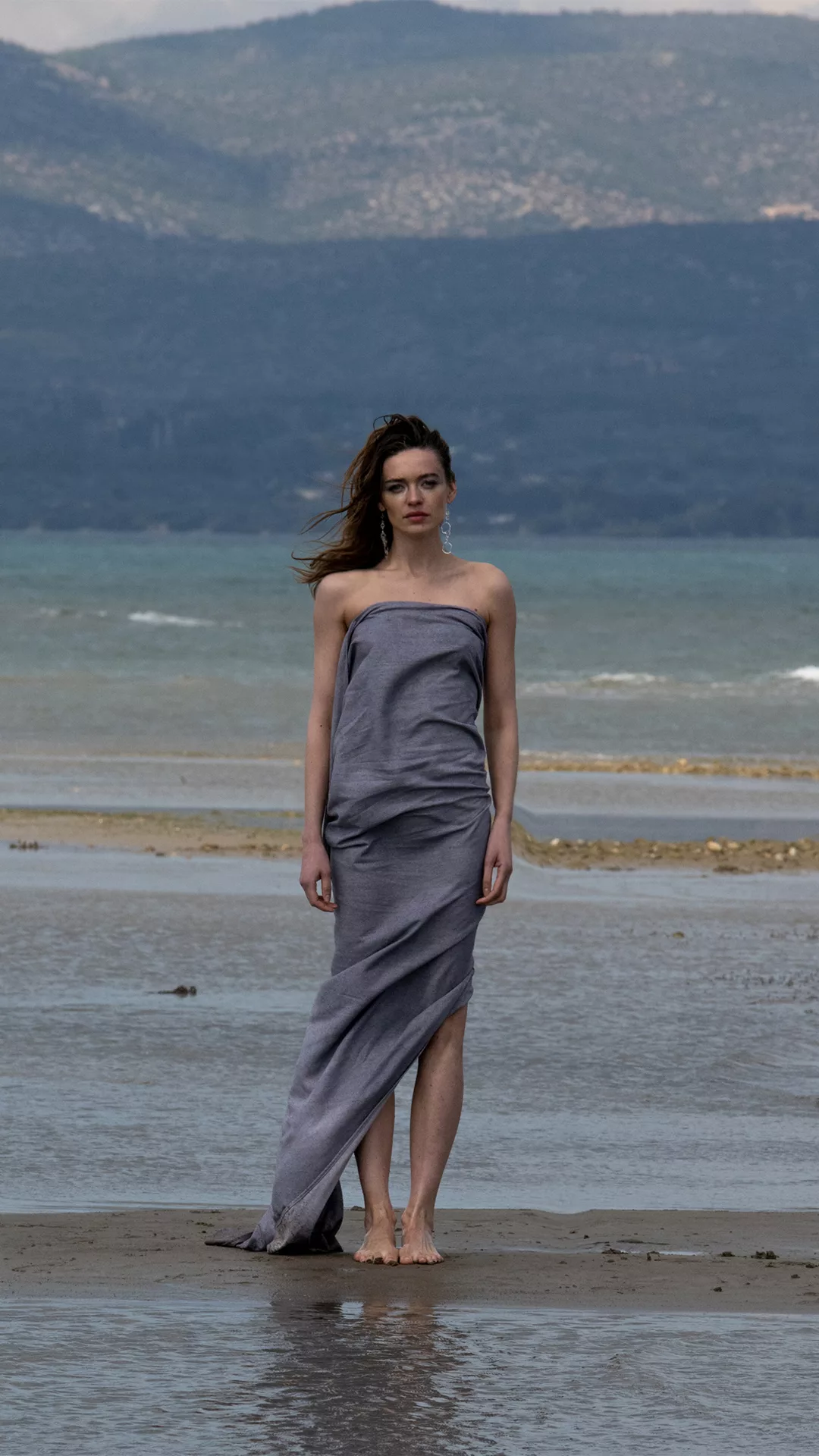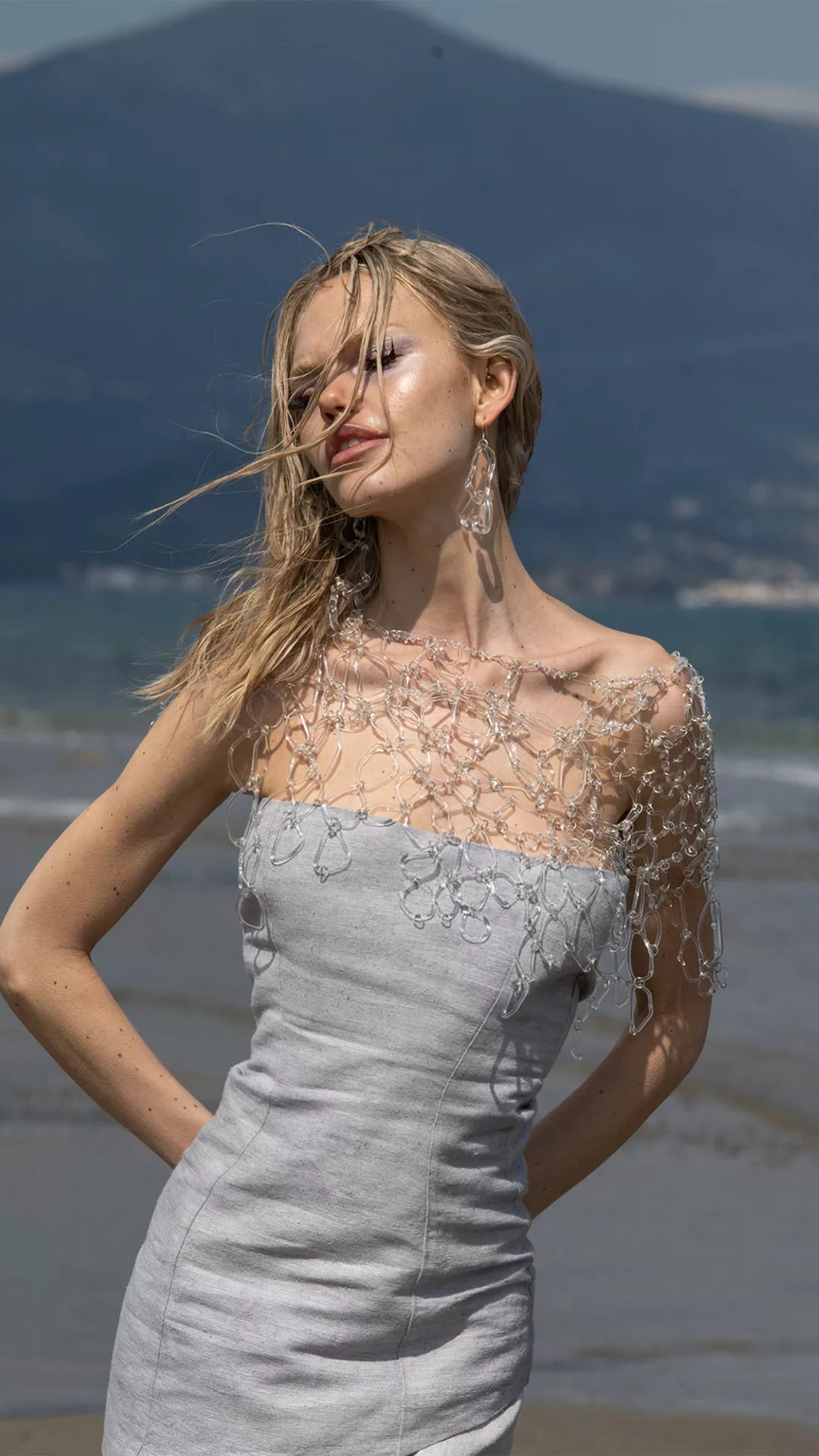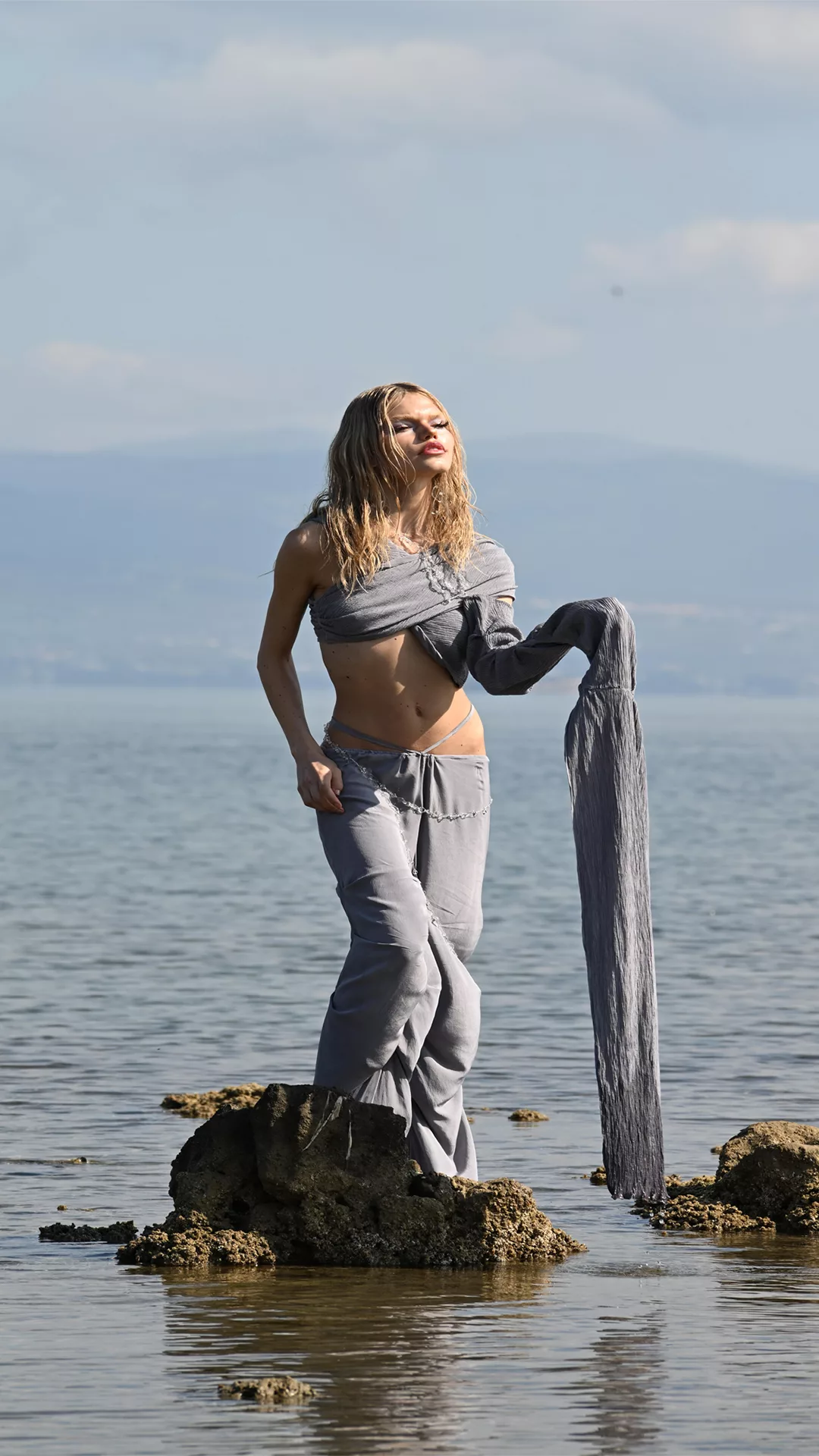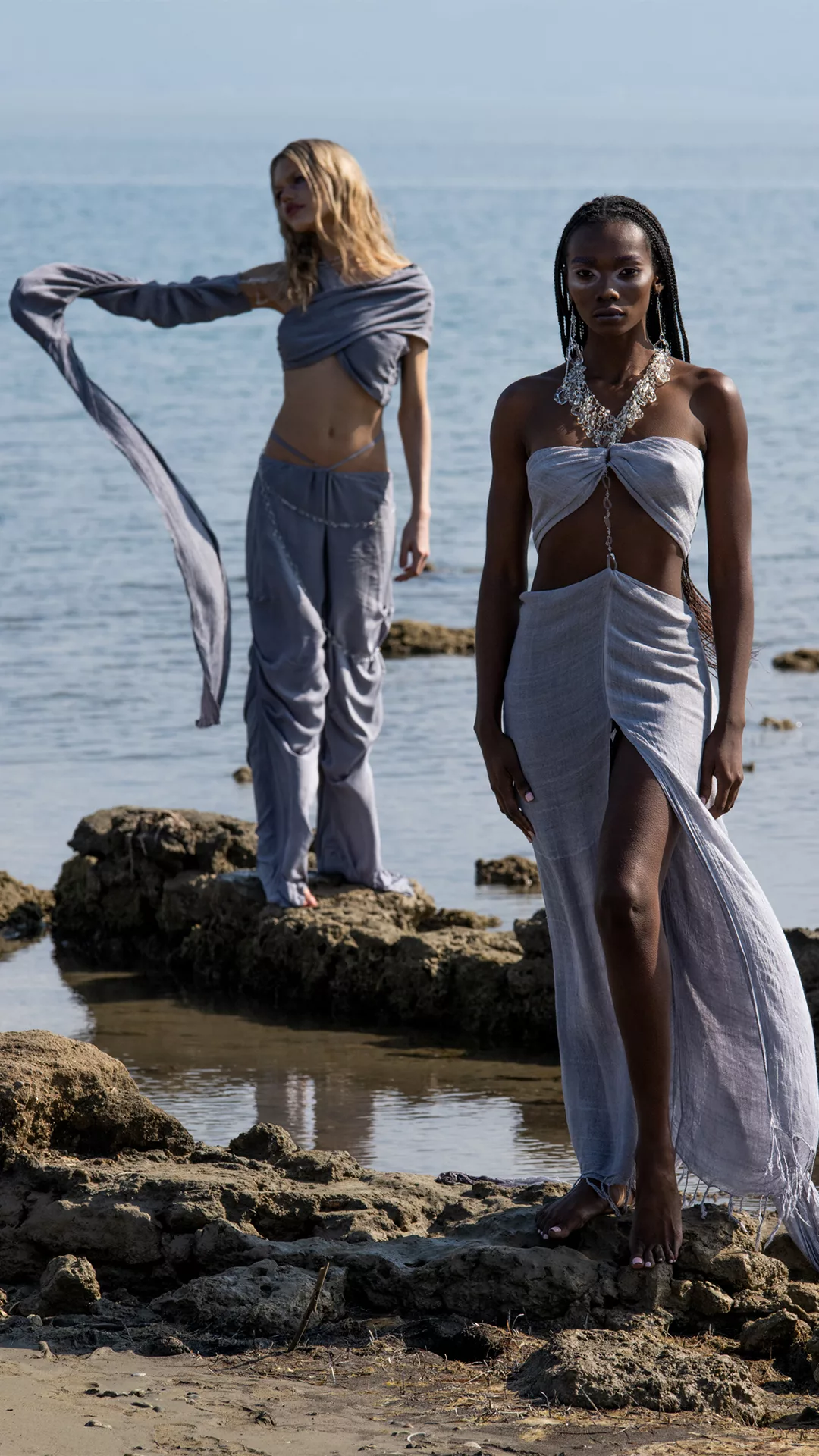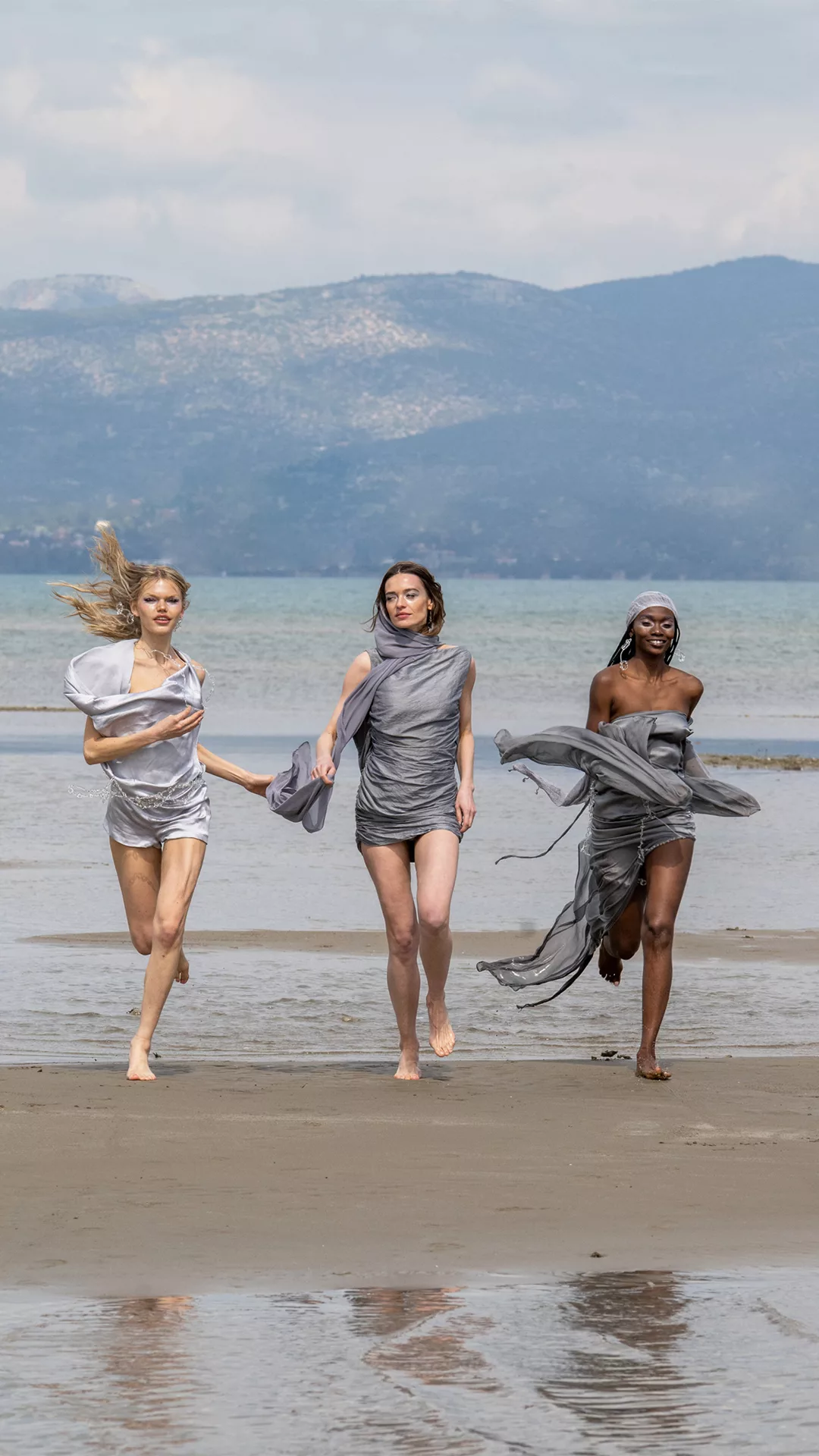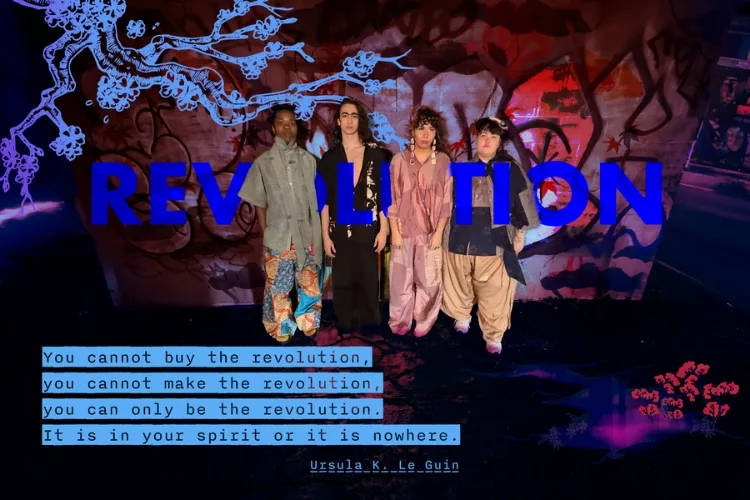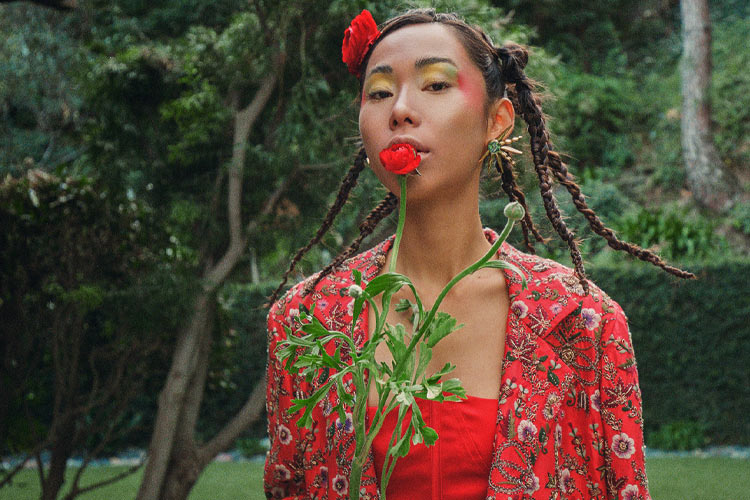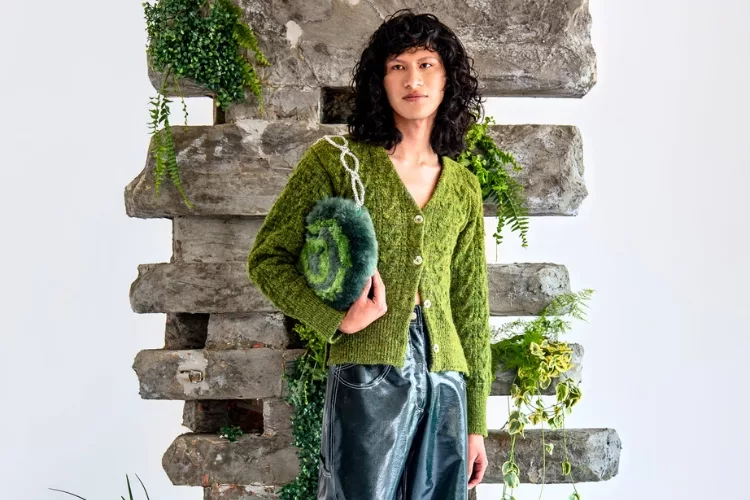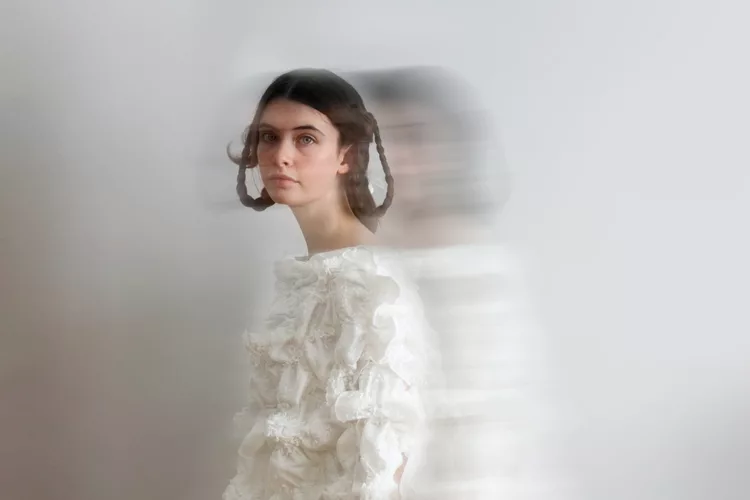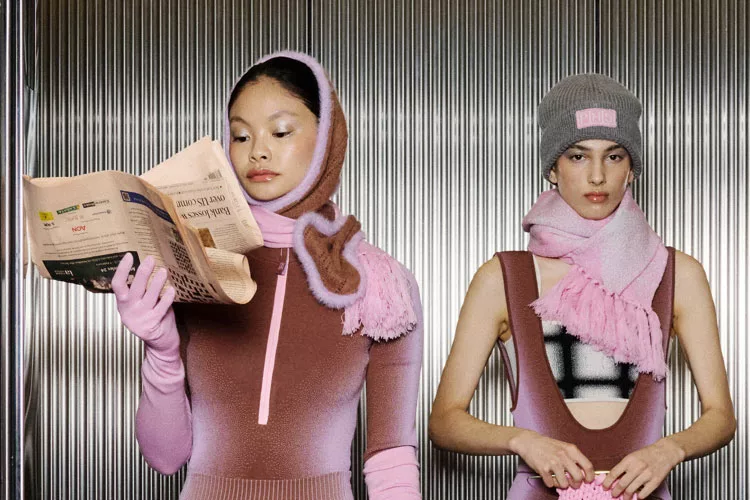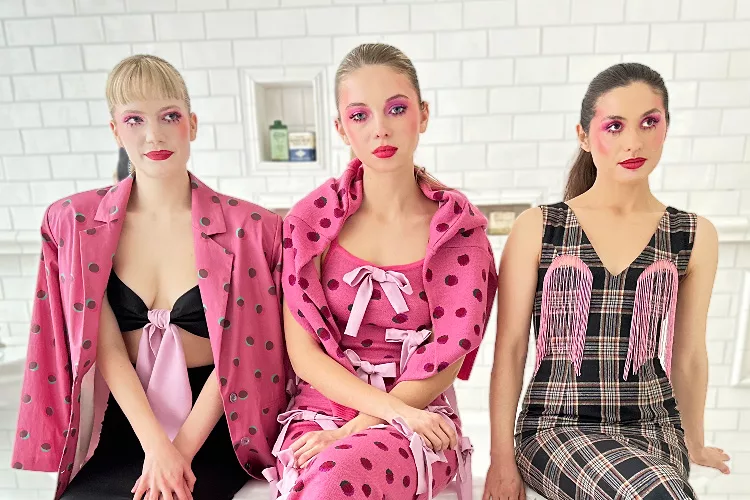The second in a series highlighting recent fashion graduates.
Izzy Li Kostrzewa
Origin: US | Mount Pleasant, MI
My brand Isaboko is based on principles of radically sustainable design that could usher in a more loving future for our relationship with clothing
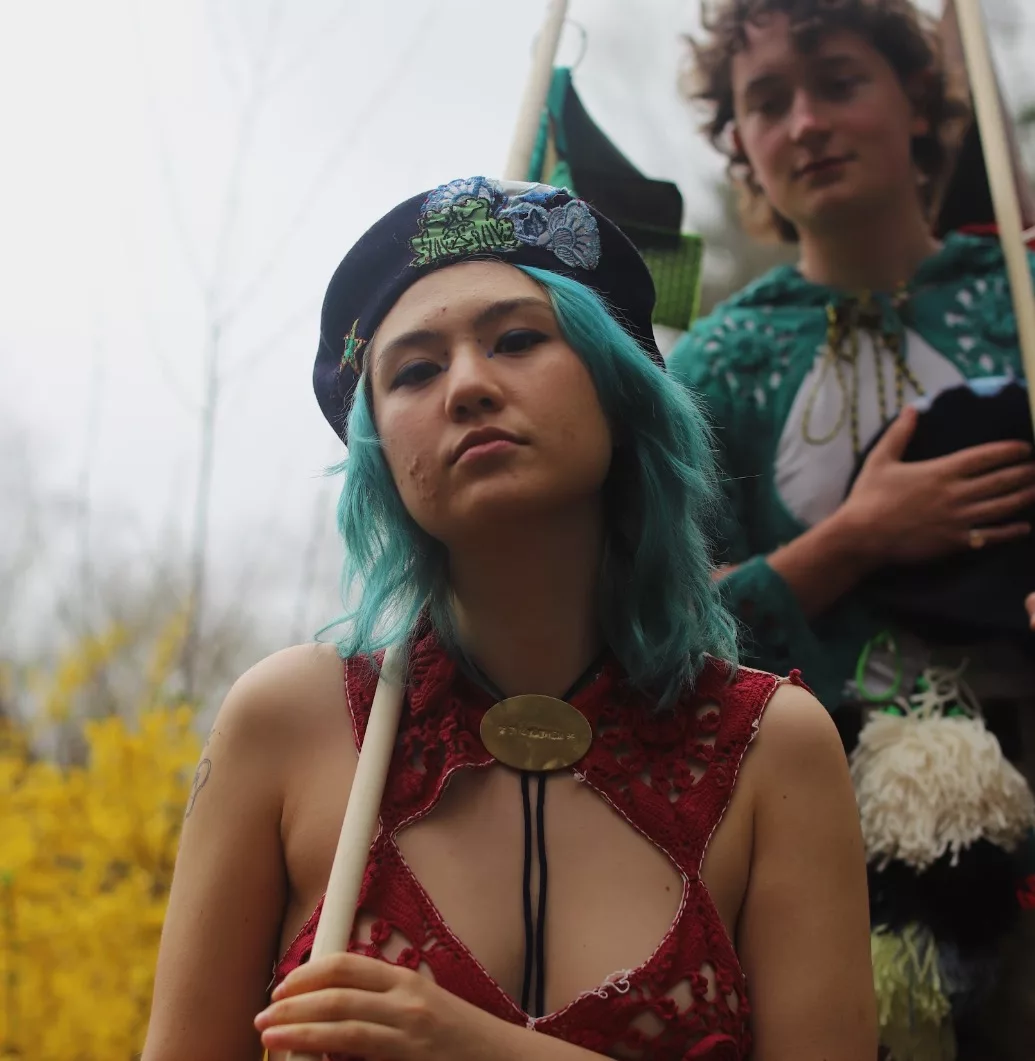
Name of Collection: Camp Isaboko
What is the inspiration or concept behind it?
I grew up going to summer camp around Michigan, and worked at one summer 2022 on the shore of Lake Michigan. It was a very old camp that had a history of over 100 years with a beautiful photo archive. While I worked there as a crafthouse specialist, I came across this canvas tarp being used to cover the table for painting days, and it was so beautiful. It had hundreds of areas of hand repair –it looked so old.
Then the director told me there was a whole shed with hundreds of these materials in them from when all the cabins “flaps” or window covers got replaced last year. They thought these covers dated back to the 1970s or earlier. I ended up filling my old grey green Toyota Echo trunk with probably 100 and stored them in my shed in Michigan. Two of them were brought back to NYC to be rain jackets in the collection with a very cool origin story. The rest grew from there.
How is circularity part of your ethos? OR How has your idea of “making” changed in this era of climate change?
My brand Isaboko is based on three principles of radically sustainable design that could usher in a more loving future for our relationship with clothing. The first is to use only waste materials. The second is to use only zero waste patterns, and the third is center gender-free design. Everything I make falls under these standards. I am trying to keep textiles from entering landfill as long as possible, but in a more impactful way. I get to challenge how people think clothes can be made and hopefully make (or rebuild?) people’s relationships with where their clothes are coming from and going.
Where do you hope to be in 3 years?
I hope to be in Brooklyn with Jonna and Ayesha continuing to water the seeds of my brand. Hopefully, they’ve sprouted by then and I’m selling pieces online –maybe experimenting with being in stores or retailers. I hope to be very happy and not afraid and not worried.
Three things keeping you sane right now
Thinking about building pallet furniture on my patio, the band Libby Quinn and the podcast “All My Relations” by Adrienne Keene (Cherokee Nation) and Matika Wilbur (Swinomish + Tulalip)
If you could design for anyone in the world who would it be and why?
I would like to design for Eva Noblezada at her oscars best actress nomination red carpet because she rocks my world.
Where can we find you online?
You can find me on IG and on my website isaboko.com very soon hehe:3
Jade to
Origin: US | New Jersey
The imagery and the narrative tied to it can be uncomfortable, disturbing even, though it is contradicted by the physical comfort of the hand-knits
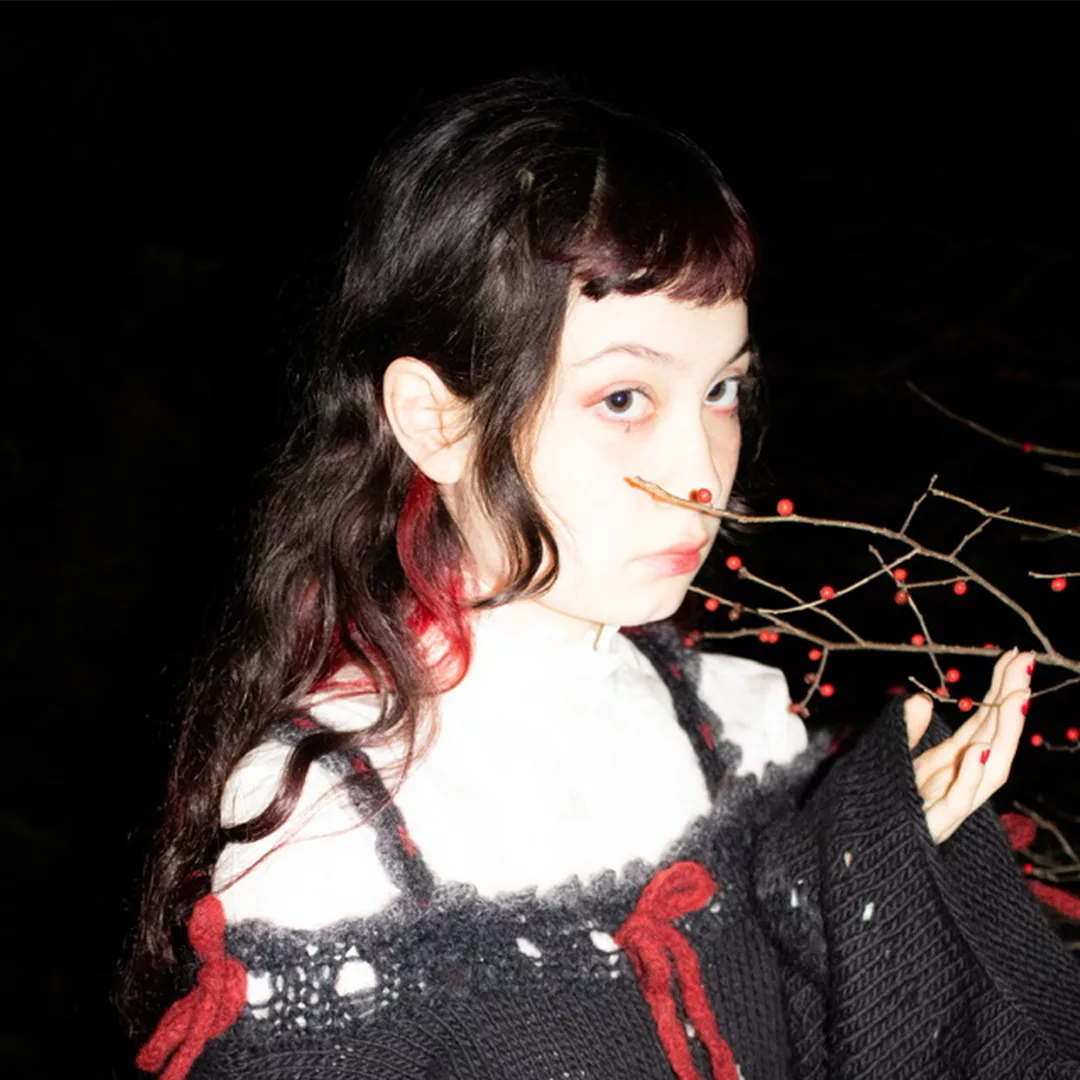
Name of your collection: Rabbit Teeth
“Rabbit Teeth” is a concept collection that tells a narrative through four characters: the rabbit, the deer, the lamb, and the flowers. The rabbit represents the tainted innocence, the loss of naivety, fixated on the horrors of our ephemerality.
The deer represents the dread of accepting or even acknowledging the reality of our delicate bodies and fragile existence.
The lamb represents purity, childlike innocence, not yet exposed to the truth of our mortality, with the wool over their eyes.
The flowers are an omen, beautifully inviting but often deceiving in their given meanings.
The red spider lily symbolizes final goodbyes, death, and abandonment.
The strong focus on materiality through hand-knitting, needle-felting, and crochet brings an illustrative quality to the pieces. The needle-felting specifically is used to mimic realistic textures of the animals depicted, capturing a certain tactility. The lace fabrics in the collection hold a story of their own, being old tablecloths that belonged to my grandmothers. The imagery and the narrative tied to it can be uncomfortable, disturbing even, though it is contradicted by the physical comfort of the hand-knits; the soft warmth, the devotion put into completing every stitch balancing the harsh realities of the story being told through them.
How is circularity part of your ethos? OR How has your idea of “making” changed in this era of climate change?
In this era of climate change, I feel that conscious choices and strong focus on materials and the physical making process have become one of the most important parts of how I create. For my work, all the yarns and roving I use are natural fibers from small businesses and farms. The lace fabric in this collection are actually old tablecloths and runners from my grandmothers.
I go into creating each piece usually with only a vague idea in mind. I don’t sketch before I start making, and with my knit pieces, I don’t write a pattern beforehand. With the freestyle nature of this process, a lot of time and care is devoted to each piece as it comes into reality bit by bit. By doing this, each piece feels more sentimental, with using fabric and yarns that have a story and consciously putting in a lot of labor and time into every stitch and detail. This way, the finished garment is more than just a sweater or a bonnet, it is a piece in which you can see the work and mindfulness in each decision made while creating it, so it can be a more treasured piece.
Where do you hope to be in 3 years?
In 3 years, I hope to still be in NYC, creating for my own brand, Rabbit Teeth, continuing to tell stories through garments and concept collections, as well as working in knitwear or some sort of other textile development job. I also hope that I can expand my machine knitting and natural dyeing skills.
Three things keeping you sane right now
Japanese horror novels, staying in with friends, and my Nintendo Switch.
If you could design for anyone in the world who would it be and why?
If I could design for anyone, I would like to design for the K-Pop group Le Sserafim. I admire how they are working to change the idol industry for the better by speaking out on the harmful aspects of the music companies and idol life. I love how, whether it’s for performances, promotion, or whatever else, how the whole group’s outfits are coordinated and complement each other, while reflecting each of the member’s own vibe and style.
Where can we find you?
Ins: jade_to, r4bbit.teeth
TikTok: s0urappleb4by
Despoina Panagopoulou
Origin: Athens, Greece
My work is influenced by my Greek heritage, my design aesthetic is rooted in a profound respect for the natural world and a belief in its inherent beauty and power.
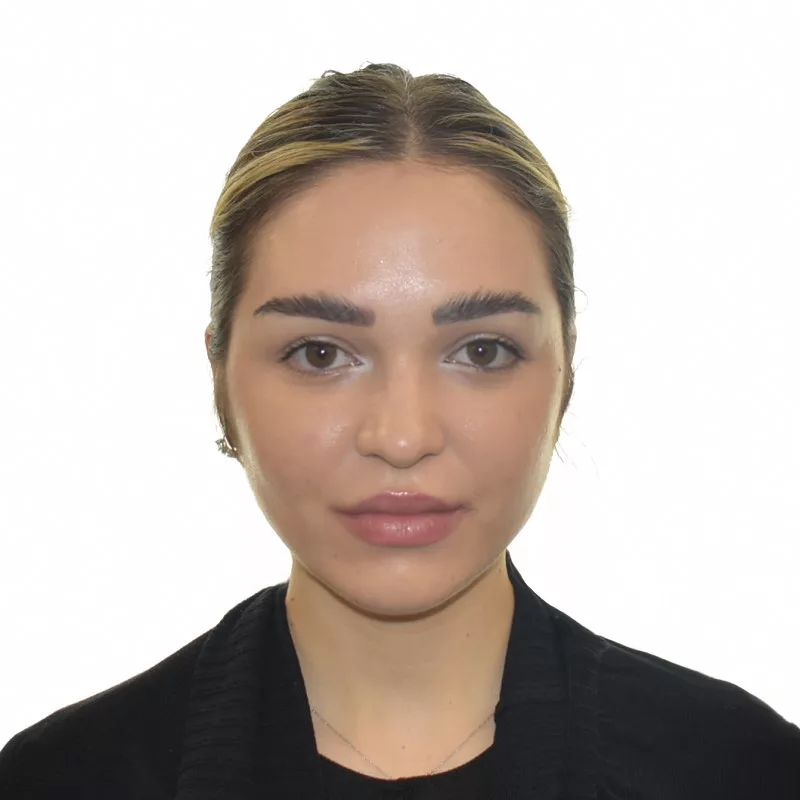
Name of Collection: Aesthesis
What is the inspiration or concept behind it?
Influenced by my own Greek heritage, my design aesthetic is rooted in a profound respect for the natural world and a belief in its inherent beauty and power. Inspired by the ancient Greek ethos of honoring and worshiping nature, I aim to encapsulate and highlight with my collection that the commodification of nature comes from our own lack of spiritual connection to nature and stress the need to reevaluate our environmental consciousness to connect with the natural world in a deeper, more meaningful way, and experience the majesty of the earth in all its glory
How is circularity part of your ethos? OR How has your idea of “making” changed in this era of climate change? Aesthesis embodies sustainability by utilizing biodegradable materials, particularly untreated silk fabric ethically sourced from Soufli, a picturesque village in Greece. These fabrics are carefully selected from local factories and artisans, allowing for a meaningful connection with small communities and providing support to their craft.
This experience has deepened my appreciation and admiration for handmade textiles and the principles of slow fashion. By incorporating traditional practices, such as weaving with heirloom techniques, Aesthesis encourages patience, gratitude, and the preservation of endangered traditions. Moreover, all garments are naturally dyed using Chestnut and Tara, avoiding harmful chemicals and promoting environmental preservation.
Where do you hope to be in 3 years?
My aspirations in the next three years are to see my brand flourish and make a meaningful impact to my customers and the fashion industry. I envision my designs being celebrated for their unique fusion of ethereal aesthetics, sustainable practices, and empowering narratives. I hope to expand my reach globally, establishing partnerships with like-minded individuals and organizations that share my passion for reconnecting people with nature and empowering the female body.
Three things keeping you sane right now
My morning coffee and meditation, long walks in the park while listening to my favorite songs that uplift my spirits, and heartfelt FaceTime conversations with my family in Greece.
If you could design for anyone in the world who would it be and why?
Through my designs, I strive to create garments that not only enhance the wearer’s confidence and individuality but also evoke a sense of serenity and a deep appreciation for the environment. Therefore, I wouldn’t choose to design specifically for someone, but rather to all women who seek empowerment and wish to reconnect with nature through the materiality and craftsmanship of the garments or hold a deep appreciation for the natural scene.
Where can we find you?
Ins: despinapng, aesthesis_studio
www.aesthesis.net
Related Articles

